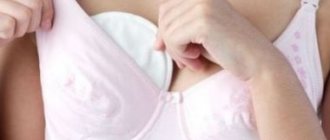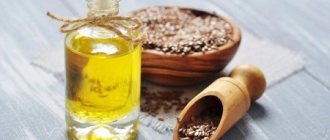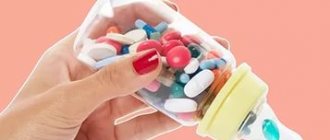Breastfeeding is considered a natural process that allows you to care for a newborn baby. Unfortunately, most young mothers may refuse it, which in turn can lead to a decrease in the level of the woman’s immune system.
For those women who regularly breastfeed their babies, one unpleasant situation arises - cracks form on the nipples. They, in turn, lead to unpleasant sensations and a feeling of discomfort in the process of feeding the baby. It is because of the occurrence of pain that many women decide to refuse to continue lactation, although today there is a huge variety of creams and ointments for cracked nipples. For those who are interested in how to get rid of cracked nipples, this information will be useful.
Products with zinc oxide
Cream for cracked nipples, which is based on zinc oxide, has an anti-inflammatory and antibacterial effect. A pharmaceutical product is used to avoid pathological microorganisms and infections from entering the body through a cracked nipple while the breastfeeding period lasts. It is better to use pharmaceutical medications based on this component without waiting for wounds to appear, but only when the nipple becomes red. Among pharmaceutical preparations produced on the basis of zinc oxide, it is worth noting the following:
- Zinc ointment
- Zinc paste
- Tsindol
- Sudocrem
- Desitin
Each medication on the list has its own characteristics, so you need to consider the pharmaceutical drugs presented separately in order to understand the specifics of their action.
Zinc ointment
Those who want to reduce irritation, heal the skin faster, and gain complete confidence that infections will not enter the body should choose the drug. The presented drug belongs to the category of budget funds, costs 20 rubles, is available in every pharmacy.
Zinc paste
The product relieves inflammation, dries wounds, is an antiseptic, and forms an outer film that protects against irritation. The drug is used for acute forms of the disease, costs about 40 rubles, and is absorbed slowly.
Tsindol
The cream relieves inflammation, prevents the appearance of fungus, dries and heals wounds. The medication has an analgesic effect and is used for acute inflammatory or purulent processes; the price of a small jar is about 100 rubles, and a large one is around 500.
Sudocrem
This effective medication is available in the form of a suspension, eliminates the negative effects of external irritants, has a gentle effect on damaged skin, dries and eliminates wounds. The cost of the drug is around 100 rubles.
Desitin
This ointment for cracked nipples is contraindicated in acute purulent processes; it heals and disinfects small wounds, and fights irritations. The ointment creates a protective film on damaged skin, which prevents new irritations.
Other effective remedies for cracks
The following will also help cure cracked nipples:
- Creams created on the basis of natural oils. Such products are harmless and can be used for a long period of time. To achieve the desired effect, the oil is applied to the affected nipple 1 to 3 times a day.
- Creams containing extracts of medicinal plants and hydromineral substances. Such preparations increase the elasticity of the skin, which in turn prevents the tissue from drying out and the formation of small cracks on it. Also, such creams relieve inflammation, kill germs and improve blood circulation through the vessels.
- Wound healing creams. Recommended for everyday use, as well as for women breastfeeding. Apply at the end of feeding and be sure to wash off before putting the baby to the breast. Such ointments include Solcoseryl and Actovegin.
- In addition to using medications, a young mother must maintain personal hygiene and carefully monitor how comfortable the baby is during breastfeeding. If you follow all the recommendations, the process of feeding your baby will bring only joy.
Products based on dexpanthenol
Gentle and effective healing of wounds can be ensured by dexpanthenol, a derivative of panthenolic acid. Products based on it have a gentle effect on women’s breasts, moisturize, have an anti-inflammatory effect, and heal cracks. Among the medications in this category, a young mother can find the following:
- Bepanten - contains dexpanthenol, lanolin, paraffin, activates regeneration processes, helps to completely eliminate damage in 2-3 days, is available in tubes of 30, 50, 100 g, costs 480-800 rubles, does not need to be washed off before feeding.
- Dexpanthenol is a remedy for cracked nipples, produced in the form of an ointment, moisturizes and heals, the drug must be washed off before feeding.
- Korneregel - gel has the ability to heal damage faster than other products in this category.
- Mama care baby born - the product is intended for use during breastfeeding, contains panthenol and vitamin E, is hypoallergenic, protects, renews and soothes the skin.
- Panthenol - copes with wounds, is an antibacterial, antiseptic pharmaceutical product, costs 300 rubles.
- D-Panthenol is a product recommended for use when a crack appears; it nourishes, softens, and regenerates the skin.
The most effective on the list are Bepanten and Panthenol, which is proven by the experience of young mothers.
Bepanten and Purelan against cracked nipples
The anti-crack agent used, first of all, must be absolutely safe for mother and baby. Otherwise, the components of the ointment can only worsen the woman’s current condition. Remember that before purchasing anti-crack cream, you must consult with a specialist!
Today, the following creams and ointments are known and effective in the fight against mammary fissures:
"Bepanten"
This cream is made only from natural ingredients. It is for this reason that it is recommended for use during lactation. It contains dexpanthenol. When it comes into contact with the skin, it turns into pantothenic acid, which in turn promotes active healing of damaged skin areas and also helps stabilize the metabolism of cellular tissues.
Bepanten also contains lanolin. It creates an additional layer of protection on the chest, which prevents trauma to the nipples and the appearance of wounds and abrasions on them.
Damaged nipples should be smeared with this cream after finishing the feeding process. It is very important to wash it off every time before the baby is put to the breast.
In some women, the use of this product may cause itching, the development of urticaria, or the appearance of allergic dermatitis. In such cases, you should stop using the medicine and seek medical help.
"Purelan"
This cream is recommended as a therapeutic drug, as well as in the form of prevention of the formation of cracks in the nipples. Its main component, lanolin, helps quickly restore damaged skin and relieve inflammation.
"Purelan" is odorless and does not contain synthetic additives. This, in turn, allows you to leave the cream on the breast even while feeding the baby. A woman should not worry about developing allergies or other side effects. Regular use of the cream will help prevent the appearance of wounds and drying out of the soft tissues of the breast.
Preparations based on lanolin
When a woman is lactating, her nipples will often crack. To help them heal faster, pharmaceutical preparations based on lanolin are used. This component softens and moisturizes the skin, is suitable for daily use, and helps the epidermis recover faster. This category contains the following creams and ointments:
- Medela purelan 100
- Lanovit
- Sanosan
- Lanolin lansihion
- Baby dream
The products are suitable for daily use; when using them, you need a special bra pad to prevent your underwear from getting dirty. Each drug is effective, restores fat balance, moisturizes and softens, and is suitable for treatment. Prevention through the use of lanolin-based creams is the ideal solution.
Prevention
There is also a whole range of creams that manufacturers position not as healing, but as preventive. Their main goal is to “prepare the breasts for feeding.” Of course, a massage using cream will not cause harm. However, in fact, no special preparation of the breast for feeding is required.
The most important thing that you should know when choosing a cream is that the chosen product will not harm you and your baby. Read the instructions and be healthy!
1.Articles are not advertising and are for informational purposes only.
Products with the active ingredient retinol
If a woman has a baby, her nipples may become cracked on the first day of feeding. Ointments and creams based on retinol will help to effectively cope with such a problem as a crack. The list of drugs in this category included the following:
- We see - it starts regeneration processes and restores the skin, costs about 250 rubles.
- Radevit - relieves itching, eliminates inflammation, protects and restores, its price is 360 rubles.
- Retinoic ointment - relieves inflammation and starts regeneration processes, costs 300 rubles.
- Retinol acetate - allows you to speed up the process of skin renewal due to the fact that it accelerates metabolic processes.
How to quickly cure cracked nipples in women: a review of the best remedies
Other breast diseases04/06/201818.8 thousand 12.6 thousand 7 min.1 Cracked nipples in women are a delicate problem that often occurs during breastfeeding. Due to pain, a nursing mother may refuse to breastfeed, thereby depriving her baby of an optimal nutritional option. But breastfeeding is a physiological process and should not cause discomfort. In severe cases, cracks in the nipples can cause the development of lactation mastitis, since various infections penetrate the mammary gland through them. Even primiparous women recognize cracks by their appearance. Externally, the crack looks like a cut that is located on the nipple circumference and extends to the periphery. There may be several of them, only on one breast or on both. Blood and ichor may be released from the cracks. Touching the nipples or trying to feed the baby causes pain, as a result of which the woman refuses breastfeeding. When a bacterial or fungal infection is attached, mastitis may occur with the formation of erosions and ulcers. Most often, cracks form in the first days of breastfeeding, which is caused by a number of reasons:
| Cause | Description |
| Incomplete latching by baby | Incorrect attachment of the baby leads to constant irritation of the nipples and their damage. This is what becomes the most common cause of cracks, and not the duration and frequency of feedings, as many mothers believe |
| Forced nipple removal | If the mother tries to stop feeding on her own, the baby begins to clench his jaw, trying to hold the nipple, which damages it |
| Improper breast skin care | Washing the nipple circumference with soap and drying it vigorously with a towel removes the natural lubricant, which has an antiseptic and moisturizing effect. |
| Other factors |
Oral thrush in a child. |
If cracks are present, it is important to begin treatment immediately.
Refusal of natural feeding and switching to formula leads to suppression of lactation and complete refusal of the child to breastfeed. For small cracks, it is recommended to use special pads. When choosing them, it is important to pay attention to the size: it must correspond to the length of the nipple.
For severe cracks, pads will not help. It is recommended to carefully express milk and feed the baby from a spoon and at the same time treat the nipples.
It is not advisable to use a bottle, as the baby will quickly get used to the simple method of getting food and will not breastfeed in the future.
If inflammation of the mammary gland develops with increased body temperature, inflammation and swelling, breastfeeding is stopped, since the infection can be transmitted to the child. In this case, the baby is fed with pasteurized expressed milk.
Primipara women most often do not know what to do with fissures and begin the wrong treatment, which is sometimes even worse than no treatment at all.
Basic Rules:
- Do not wash your breasts too often, especially with soap. The alkaline environment corrodes damaged skin and washes away the protective layer, which can lead to the formation of bleeding ulcers.
- Systemic and local antibiotics should not be used because they pass into breast milk. Drugs are prescribed only by a doctor in case of a fungal or microbial infection.
- Do not lubricate the nipple area with brilliant green or iodine: they dry the skin and corrode the wounds.
- Do not wipe nipples with alcohol. It dries out the skin excessively and can cause chemical burns.
- It is not recommended to create a wet environment for the nipples - you should change breast pads often and keep the breast open.
Drug treatment includes the use of ointments and creams. Lubricating the nipples is carried out immediately after breastfeeding. Thanks to this, the composition is absorbed into the skin until the next feeding.
The table shows various groups of drugs that are effective in treating cracks:
| Active substance | Drugs |
| Dexpanthenol is a derivative of pantothenic acid, a B vitamin, and is a safe substance. Any of the listed drugs is applied to the skin after feeding. Before the next time you put your baby to the breast, the product must be washed off. | Dexpanthenol |
| Korneregel is an eye gel, but it can be used for cracks to reduce unpleasant symptoms | |
| Bepanten | |
| Cream-balm for nipples Mama Care | |
| Zinc oxide is a well-known antiseptic and has a drying effect. These drugs prevent infection of wounds. Creams and ointments should be applied in a thin layer. It is recommended to wash off the product before feeding | Desitin |
| Sudocrem | |
| Tsindol | |
| Zinc ointment | |
| Lanolin is an animal fat that deeply nourishes, moisturizes and protects the skin. The products are applied to the skin in a thin layer 1-3 times a day | Cream Lanovit with sea buckthorn oil |
| Breast skin cream Baby line | |
| Nipple cream “Dawn” | |
| Purelan | |
| Retinol (vitamin A) – effectively restores and softens the epidermis. The products are applied to cracks in the morning and evening. They must be washed off before feeding. | We see |
| Retinoic ointment | |
| Radevit | |
| Vitamin A |
Also in breast skin therapy, products with natural oils and plant extracts are used. In severe cases, wound healing agents are prescribed:
| Active substance | Drugs |
| Natural oils soften the skin and heal wounds. The products are applied to the nipples in a thin layer 1 to 3 times a day | Nipple cream Mama Comfort |
| Chicco Breast Serum | |
| Plant extracts and mother liquor from Lake Pomorie - preparations prevent cracking of the nipples and eliminate irritation. Have antimicrobial, anti-inflammatory effects, improve tissue regeneration | Ointment for nipples “9 months” |
| Ointment Vulnusal | |
| Wound healing agents - prescribed for deep cracks to activate metabolism and tissue restoration. Apply a thin layer to the affected skin 3 times a day. Be sure to wash them off before feeding | Solcoseryl ointment |
| Actovegin gel |
Many mothers, fearing harm to the child, do not want to use medicinal ointments and creams and resort to traditional medicine. You can use the following recipes described in the table:
| Component | Mode of application |
| Own milk | After each feeding, you should lubricate your nipple with your breast milk. |
| Sea buckthorn oil | It is a natural healing agent, safe and has no contraindications. After application, the skin softens and new cracks do not form. Apply after each feeding, no need to rinse off |
| Olive oil | The product effectively softens the skin. It is especially effective at the very beginning of crack formation. Used similarly to sea buckthorn oil |
| Pine nut oil | The oil contains a large amount of vitamin E and the entire vitamin B complex, which promote wound healing. Used similarly to sea buckthorn oil |
| Chlorophyllipt oily | The product is based on eucalyptus leaf extract, which has anti-inflammatory, antiseptic and antimicrobial effects. You need to lubricate your nipples after feeding and rinse them off before putting your baby to the breast again. |
| Aloe vera | Aloe (specimens older than 2 years) has wound-healing properties, reduces irritation and pain. Fresh juice is dripped onto the cracks after feeding, sterile gauze is placed on top of the nipple, onto which the plant juice is also applied. When the gauze dries, the product is reapplied. |
| Infusion of calendula flowers | Infusion recipe: 1 tbsp. l. pour a glass of boiling water over the flowers and leave for 15 minutes. Then soak gauze in the liquid and apply it to the nipple. When the gauze dries, repeat the manipulation. Treatment should be carried out throughout the day. Pharmacies also sell calendula ointment. It effectively heals wounds, providing an antiseptic effect |
| Fresh cabbage leaf | It can be used not only in the treatment of cracks, but also for mastitis. Thanks to riboflavin, tissue regeneration occurs. A whole clean leaf of cabbage should be applied to the chest for the whole day; at night, replace it with a fresh one. |
| Infusion of birch leaves | Birch leaves disinfect and heal cracks. Preparation and use are similar to using calendula infusion |
The best way to help avoid the appearance of cracks during breastfeeding is to take preventive measures:
- do not remove the breast until the baby releases it;
- wash your breasts 1 or 2 times a day without soap;
- after a shower, apply products with lanolin;
- avoid excessive moistening of the skin of the nipples - often change breast pads and wear ventilated clothing;
- follow the rules for attaching the baby to the breast.
Source: https://fraumed.net/mammary-gland/disorders-of-breast/treschiny-soski.html
Preparations based on herbal ingredients
Herbal remedies can also help young mothers heal a cracked nipple. These drugs are completely safe, help prevent relapse, and help with daily care of the nipple circumference. Additional skin protection is achieved through the use of these products:
- Mama Donna moisturizes and softens, is used for prevention, costs 650 rubles
- Nippi Cleam is based on wax, protects and restores the skin
- Weled oil contains essential oils of wheat germ, jojoba, arnica, almond and vitamin E, prevents the appearance of wounds, costs 1420 rubles
- Vitaon relieves inflammation, contains herbal extracts, heals the skin, price up to 200 rubles
- Solcoseryl - gel and ointment to accelerate regeneration for 120-200 rubles
- Actovegin needs to be lubricated on the breasts when there are cracks, costs 300 rubles
- Rosehip-based rose oil, softens, price 480 rubles
There are enough products in this category; you need to choose something whose intolerance to the components is completely absent.
Causes of nipple damage
There are several factors that cause cracked nipples during breastfeeding. In most cases, they appear simultaneously, which aggravates the situation of the nursing mother.
Incomplete breast capture
All newborns have a sucking reflex, which is necessary to obtain mother's milk. The instinct to suck the breast is formed when the baby is in the womb. However, the child cannot always grasp the nipple correctly, and the young mother is afraid or does not know that she needs to help the baby. As a result, cracks appear.
Incorrect breast grip can be recognized by the following signs:
- Pain sensations develop during natural feeding.
- The baby holds only the nipple with his mouth.
- The areola is not involved in the feeding process.
Incomplete latching of the mother's breast leads to the formation of slight damage to the dermis in the nipple area, which after some time becomes cracks.
Weaning the nipple during breastfeeding
The phenomenon in question may arise due to an attempt to remove the nipple from the baby’s mouth, when the mother thinks that the baby has fallen asleep after or during feeding. However, most often children instinctively clench their jaws so as not to lose their source of nutrition. As a result, the skin in the nipple area is injured.
Pediatricians do not recommend taking away the breast from a baby if he supports it. He probably still wants to eat. When the baby falls asleep completely, the nipple falls out of his mouth on its own. If it is necessary to stop natural feeding, you should carefully insert a clean finger into the baby’s mouth, which will help loosen the grip on the breast and allow the nipple to be released.
Incorrect pumping
If the baby is fed according to his wishes, it is not necessary to express milk. If it is necessary to improve lactation or a young mother needs to be away from her baby for a while, she should empty her breasts.
Cracks may appear as a result of improper implementation of the procedure in question. For example, when pressing on the nipples rather than the areolas. Expressing breast fluid with a breast pump on high power can also cause skin damage. Constant injury will cause deep, painful cracks to appear.
Incorrect breast care
Causes of cracked nipples associated with improper breast care:
- Drying of the dermis in the area of the areolas and nipples.
- Using a bra that rubs the breasts and is made from non-natural materials.
- Leakage of excess breast milk due to increased lactation.
- The occurrence of thrush (candidiasis) in the oral cavity of a baby.
- The appearance of an allergic reaction to detergents.
During lactation, it is necessary to regularly follow standard rules of personal hygiene. Do not shower too often, use soaps or cosmetics containing alcohol. Once a day is enough. This can be explained by the production of a protective lubricant, which helps soften the dermis, has antiseptic properties, and suppresses the proliferation of pathogens. With constant washing of the body, the fat layer disappears, the skin is deprived of its natural protective barrier.
Application of nipple
The problem in question may occur due to the use of pacifiers or baby bottles. If a mother gives the baby a pacifier or feeds formula from a bottle between breastfeedings, the baby may become disoriented. To obtain nutrition from artificial containers and the mother's nipple, babies use different sucking methods. Therefore, getting used to a pacifier, a baby can harm the mother's breast.
To latch on to the nipple, the baby does not need to open its mouth wider than to latch onto the mother's breast. While sucking food from a bottle, the baby has to work with his jaw. The pacifier should be held close to the top of the mouth, and the nipple should be grasped with the baby's tongue and placed in the center.
Other means
In addition to the drugs Levomekol, Medel, Purelan, Traumeel and others, a woman can use syntomycin or tetracycline cream. In addition to pharmaceutical drugs, you can lubricate nipples with folk remedies:
- butter
- treating the damaged area with breast milk
- applying cabbage leaf
- apple lotions
- use sea buckthorn juice or oil, because sea buckthorn heals well
- gruel from raw beets or ointment from black poplar buds
You cannot use products such as brilliant green and hydrogen peroxide, but you can use olive, coconut or Vaseline cream. Castor oil preparation is also not worth buying; castor oil can disrupt the functioning of the child’s intestines.
How to choose the most effective remedy for quick healing
It is better to choose the method and method of treating cracks together with your doctor. To choose the right drug, you don’t need to look at photos of results and read every review; you should see a specialist and he will tell you which method of solving it will be more effective. Your doctor may prescribe an effective leave-in cream, with or without antibiotics, antiseptics, depending on the specific case. In order for the product to help, it must be selected correctly and used according to the instructions, only then will it have an effect and allow you to consolidate the result for a long time, relieving the woman of discomfort.
Compound
Sudocrem is a combination drug whose main active ingredient is zinc oxide. This is a crystalline powder, it is completely insoluble in water, but mixes with other components.
Substances that are added to zinc oxide:
- lanolin;
- benzyl alcohol;
- benzyl benzoate;
- benzyl cinnamate.
Sudocrem: instructions for use contain the entire list of diseases for which the drug helps.
Substances that structure the mixture and give it the appearance of a cream:
- paraffin;
- wax;
- purified water;
- lavender oil;
- propylene glycol.











